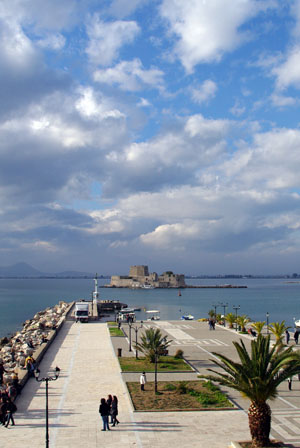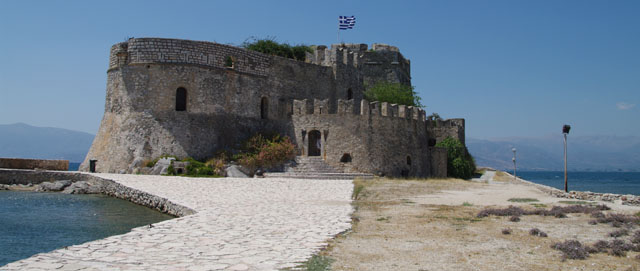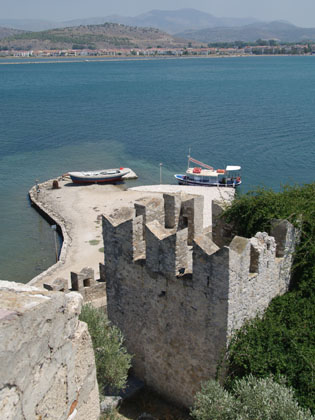Bourtzi
| The fort on the sea, which has remained known by its Turkish name 'Bourtzi', meaning tower, has become Nauplion's trademark.
On this small island, which is in the middle of the city's harbour, there was once a Byzantine church consecrated to Aghios Theodoros. |
||
 |
||
|
The Venetians, having understood the strategic importance of this site for the protection of the port, built a tower on the rock in 1473. The Italian architect, Antonio Gambello, who had undertaken the building of the Castello di Toro, designed the fort, which was then completed by the engineer Brancaleone. |
||
| The fort was designed to fit the narrow shape of the island. The centre is taken up by a tower, in the shape of a rough hexagon, with covered cannon positions on either side at a lower level.
The interior of the castle has three floors which were connected by moveable stairs for reasons of safety. Water was supplied from a large circular water tank that was located in the cellar, under the tower. There were entrances to the north and south. A small harbour was created on the north-eastern side to enable safer access to the fort. Between the fort and the sea wall there was a narrow passage, which could be closed with a chain to protect the port from enemy ships. The fort bears the signs of many alterations and repairs from different times. |
 |
|
| The Turks surrounded the fort with the so-called 'porporella', in other words an undersea barricade of stones to make it impossible for large ships to approach.
In the 18th century the Venetians proceeded with additions to the Bourtzi. They raised the height of the central tower and almost the entire island was covered with defensive positions. |
||
 |
||
| During the time of the Greek revolution, the Bourtzi was known as Casteli or Thalassopyrgos, sea tower. It was here for a short while in 1826 that the Greek government sought shelter, when the rebellious nation fell into civil strife.
The Bourtzi was active as a fort until 1865. It then became the place of residence for the executioners who carried out the death sentences on the prisoners in the Palamidi. |
||
  |
||
|
In 1935 it was turned into a hotel after alterations by the German architect Wulf Schaeffer. Today one can visit the Bourtzi by boat from the seafront. The exact location of the Bourtzi can be found in Section Map. |
||
 |
||


